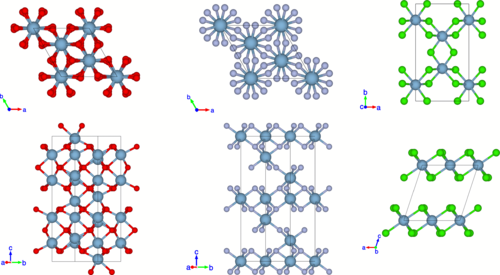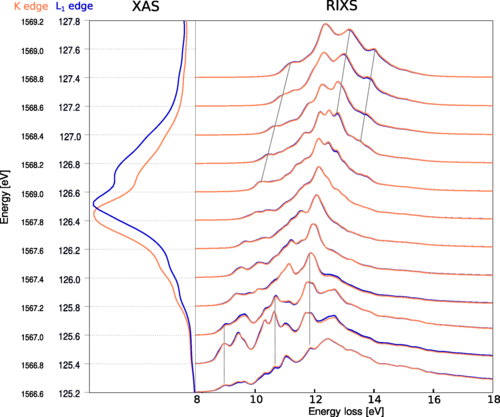Francesco Sottile
Research Engineer

Research Activity
My Research activity is mainly based on the theoretical study, via the state-of-the-art of numerical methods, of electronic properties of real materials. I am particularly interested in the study of the limits of actual approaches and approximations, in order to propose solutions to go towards a better comprehension and description of the physics of the studied system. Several research lines are currently investigated:
- exciton dispersion and dimensionality effects
- new kernels for TDDFT
- interconnection among different spectroscopies (EELS, (R)IXS, PES).
My group, whose activity mainly concerns theoretical and numerical developements of excitonic effects in varied spectroscopies, is today composed of 2 PhD students, Carlos Rodriguez Perez and Ilyada Ashgar (in co-supervision with Vitaly).
An important part of my activity is also devoted to code developments. I am the coordinator of the ab initio codes DP (linear response TDDFT code) and EXC (Bethe-Salpeter equation code).
Publications and Talks
Recent Articles
-

Al K-edge XANES of octahedral aluminum compounds: Similarities and differences via the analysis of excitonic properties
This study presents an ab initio investigation of the XANES spectra at the aluminum K-edge for three compounds: Al2O3, AlF3, and AlCl3, where the Al atoms share the same oxidation state (III) and are coordinated in an octahedral symmetry. The XANES spectra calculated within the independent-particle approximation (IPA) reveal significant differences, including shifts in the spectrum onset, variations in the spectral shapes, and the presence of a prepeak in the case of AlCl3, all in correspondence with the behavior of the projected density of states of the absorbing atom in the different materials. The origin of those features can, therefore, be identified in the specific band structure of each compound. When electron-hole interactions are taken into account through the solution of the Bethe-Salpeter equation, a series of dark and bright excitons with large binding energies and Frenkel character is obtained. The strong excitonic effects lead to the suppression of the prepeak in AlCl3 and further accentuate the differences among the three Al K-edge spectra, which shows that drawing conclusions solely on the basis of IPA spectra may be misleading.
-

Connections between resonant inelastic x-ray scattering and complementary x-ray spectroscopies: Probing excitons at the Al K and L1 edges of alpha-Al2O3
We present an ab initio study of neutral core and valence electronic excitations in alpha-Al2O3 by solving the Bethe-Salpeter equation (BSE) of many-body perturbation theory within an all-electron framework. Calculated spectra at the Al K and L1 edges are in remarkable agreement with available experiments from x-ray absorption (XAS) and x-ray Raman spectroscopy once excitonic effects are taken into account. The combination of the BSE spectra for the two techniques confirms the dipole-forbidden nature of the exciton prepeak as suggested by recent calculations based on density-functional theory. Moreover, we make predictions for resonant inelastic x-ray scattering (RIXS) spectra at K and L1 edges, which strikingly fully overlap also beyond an independent-particle picture. The RIXS calculations reveal two distinct regimes as a function of incoming photon energy. Below and at the XAS threshold, we observe Raman-like features, characterized by strong excitonic effects, which we directly compare to peaks in the loss function. Above the XAS threshold, instead, fluorescence features become predominant: RIXS spectra can be well described and analyzed within an independent-particle approximation showing similarity with the x-ray emission spectrum.
All articles available here.
LANGUAGE SKILLS
-
Italian Mother Language
-
English Fluent
-
French Fluent
-
Spanish Good level
Conferences Organized
Schools Organized
Organizer of 21 international schools and tutorials. They can be divided in several different types of events:
- CECAM School :: Theoretical Spectroscopy Lectures (9 events: Lyon 2006, Lyon 2007, Zurich 2009, Lausanne 2011, Lausanne 2013, Lausanne 2015, Lausanne 2018, Lausanne 2022, Lausanne 2024)
- Theoretical Spectroscopy School :: theory and codes, Palaiseau, France (2 events: Palaiseau 2012 and Palaiseau 2014
- ETSF Theoretical Spectroscopy Lectures for experimentalists, École Polytechnique. (3 events: Palaiseau 2009, Palaiseau 2010, Synchotron Soleil 2014)
- CECAM School :: Basic techniques and tools for development and maintenance of atomic-scale software. (4 events organised: Lyon 2008, Zaragoza 2010, Lausanne 2014, Lausanne 2017)
- International summer School in electronic structure Theory: electron correlation in Physics and Chemistry (ISTPC). 3 events held in Aussois (France): June 2017, June 2020 (postponed to 2022), June 2024
- Optimizing Digital Teaching and Communication. Online course held in the ETSF moodle platform. September 2021
Tools I like
Programming
- Fortran
-
- Julia
-
- Python
-
- LaTeX
-
- HTML+CSS
-
Web and Design
Affiliations and details
Laboratoire des Solides Irradies
Theoretical Spectroscopy Group
91128 Palaiseau cedex, France
Bat.83 - Office 83.20.04
Positions
Studies
Awards and Fellowship



Tutoring and Supervision
Trust and Responsabilities
Teaching
- University courses (master level)
Advanced Solid State Physics2017-presentUniversité Diderot, Master Quantum Devices. 15 hours (per year) + exam.Advanced Solid State Theory2018-2019Invited professor to Humboldt University, Master Solid State Physics. 96 hours + exams.Theoretical Spectroscopy2013-2017Ecole Polytechnique, Master level, Projet de Recherche en Laboratoire. 45 hours (per year) + plus examNumerical Physics2004-2005Université Diderot, License en Physique. 45 hours + exams. - Lectures in international schools
Several lectures (> 50) devoted to electronic structure theory (courses on Quantum Monte Carlo and Density Functional Theory), theoretical spectroscopy (Time Dependent Density Functional Theory, Bethe-Salpeter Equation, Micro-Macro connection), ab initio codes (DP code, EXC code) and development tools (revision systems, use of graphical tools in science, git, makefile and latex). - E-learning projects
Designer and creator of the E-learning project devoted to theoretical spectroscopy (hosted in https://evo.polytechnique.fr/). Coordination with the e-learning team of the Ecole Polytechnique ETSF.Density Functional Theory2020MOOC on Density Functional Theory (3-week course) hosted on the Coursera platform. The course is available here.Hartree and Hartree-Fock Theory2017Introduction to Hartree and Hartree-Fock methods. Hosted in the moodle platform of the ETSF.The Variational approach and Theorem2017Mini-module on the description and derivation of the Variational Theorem. Hosted in the moodle platform of the ETSF.
Popular science
Material for a more general audience.
- Calculs des spectres électroniques : quelle réponse ?. This article (that you can find here) appeared in the Lettre de l'Idris (a newsletter edited by the National Computing Center IDRIS), in 2003.
- Edmond Becquerel's color photography and quantum mechanics. This video (available here) is our contribution to the symposium dedicated to Edmond Becquerel in December 2020.